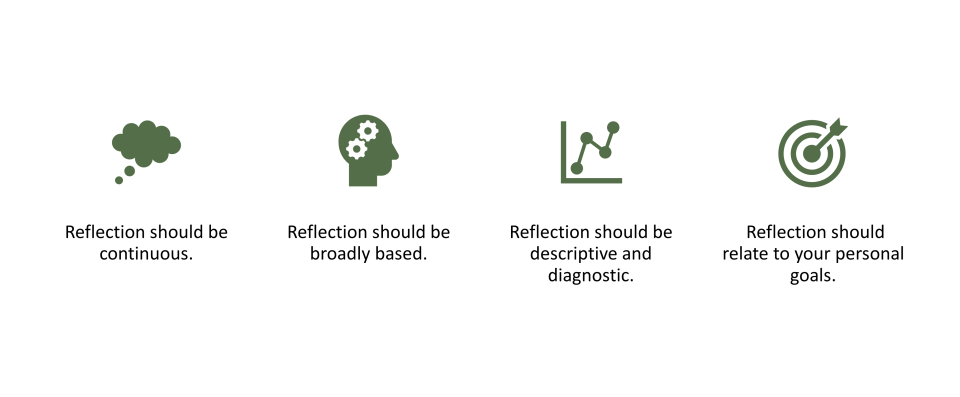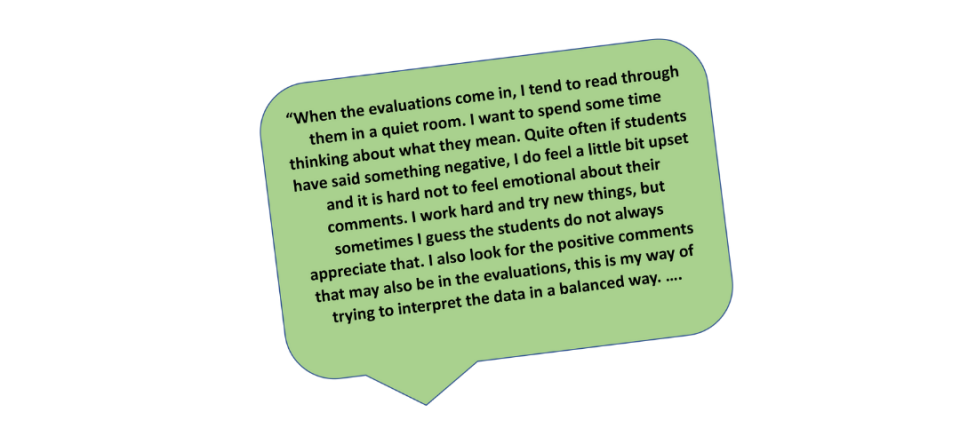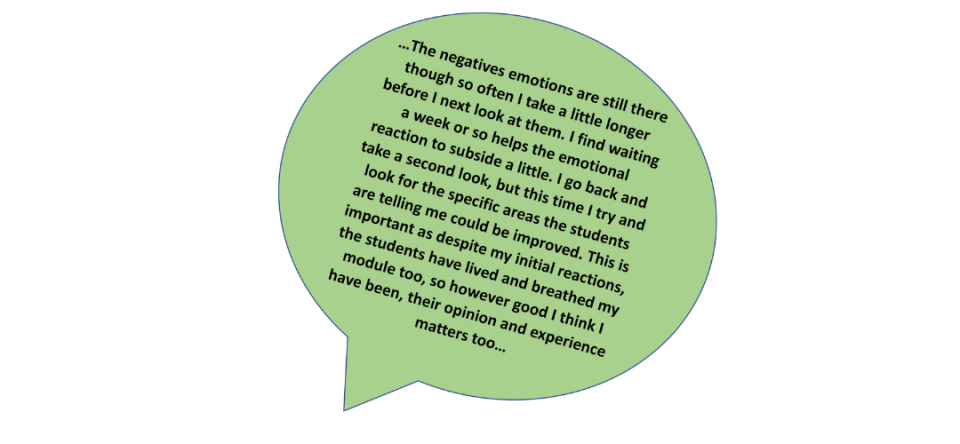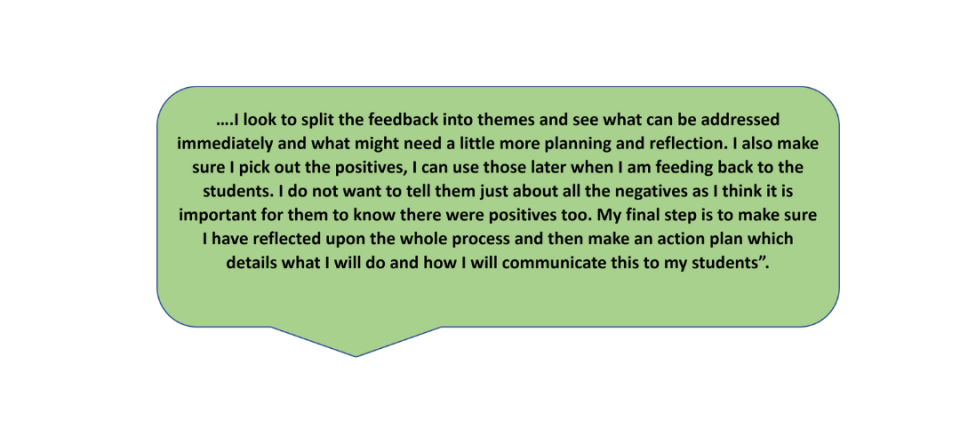Through Your Students Eyes
Student evaluations of your teaching are a good site for you to pause and reflect upon what has occurred during your teaching. The evaluation of what has occurred allows for you to learn
from your actions and then to modify and plan for future action. Often these situations are referred to as critical incidents. These incidents might represent moments of challenge, adversity, or success. They can challenge your thinking, your emotions and lead you to inwardly question where you are with your teaching practice. All of this is part of becoming a reflective practitioner who strives to understand and maintain the things that go well as well as responding to and modifying those that do not always work out.
Using Students Evaluations
Working out the best time and place to view your student evaluations is an important part of the process. We all want to know what the students thought and its tempting to want to quickly take a look at their feedback, but what if its negative or they say something that you might find upsetting. Well, this is where it may be a good idea to allocate a space and time when you feel you have an opportunity to sit down and dedicate all your energy into reading and analysing what they have to say. This way at least you will begin the reflective process in a focused and planned way, rather than taking a quick look as you rush to another teaching session or tutorial.
In most situations you will probably get both quantitative and qualitative data. Interpreting this data and making sense of what it means in most cases will relate to the goals you have for your situation. You may for instance have tried something different in this module and therefore may not be expecting high scores. Similarly, you may have addressed previous cohorts’ feedback and implemented changes to this module, so you want to see if scores have positively changed. Either way over a period of years you can begin to build a picture of the kinds of scores you are aiming for each year and track this progress. You can also look for trends in the data, are students saying the same things year after year. It may be you have a subgroup of students who could benefit from modifications or alternative teaching approaches. Here you can begin to reflect upon want you might need to do to address the trend in scores or comments in subsequent iterations.
Fundamentally you are never going to please everyone and its ok to be disappointed, hurt or even angry if the feedback is negative. Under the protection of anonymity some students may from time to time write harshly worded criticism that you will find hard to take on board. This is a very natural reaction and demonstrates that you care about your profession. Everyone receives some negative teaching evaluations during their career, its then about how one reflects upon this feedback and uses it to improve their practice going forward. Talking to a trusted colleague about the comments can sometimes help here too. They will not always have the same emotional attachment and may be able to help you see how you can turn negatives into positives for future practice.
Points to remember about Reflection

Case Study – Processing feedback from students
Keith has been teaching for a few years now. He decided to evaluate his teaching at the midpoint of the module. Here is what he told us about the steps he takes and how he deals with student feedback:



Action Plan following Student Feedback
This activity could help you to reflect upon how you might react to feedback you receive from your students. Below are a series of quotes students might give. The activity here is asking you to record your emotional response to these and subsequently what might do in an actionable planned way
